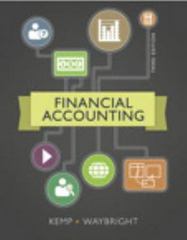Question
Multiple Choice: I. Changes in fair value of financial assets are included in the profit or lossfor financial asset at A. Fair Value through Profit
Multiple Choice:
I. Changes in fair value of financial assets are included in the profit or lossfor financial asset at
A. Fair Value through Profit or Loss
B. Fair Value through Other Comprehensive Income
C. Both Fair Value through Other Comprehensive Income nor Fair Value through Profit or Loss
D. Neither Fair Value through Other Comprehensive Income nor Fair Value through Profit or Loss
II. The fair value at initial recognition of financial asset is
A. The carrying amount of the asset acquired
B. The price paid to acquire the asset less transaction cost
C. The price paid to acquire the asset
D. The price paid to transfer or sell the asset
III. Debt instrument may be classified as financial asset EXCEPT at
A. None of the choices
B. Fair Value through Other Comprehensive Income
C. Fair Value through Profit or Loss
D. Financial Asset at Amortized Cost
IV. The Effective interest method of amortizing discount provides for
A. Decreasing amortization and increasing interest income
B. Decreasing amortization and decreasing interest income
C. Increasing amortization and increasing interest income
D. Increasing amortization and decreasing interest income
V. A requirement for a security to be classified as held-to-maturity is
A. All of these are required.
B. positive intent.
C. the security must be a debt security.
D. ability to hold the security to maturity.
VI. A method of accounting whereby the investment is initially recognized at cost and adjusted thereafter for the post-acquisition change in the investor's share of the investee's net assets.
A. Fair value method
B. Cost method
C. Revaluation method
D. Equity method
VII. An investor in common stock received dividends in excess of the investor's share of investee's earnings subsequent to the date of the investment. How will the investor's investment account be affected by those dividends for each of the following investments? (1) Financial asset at fair value and
(2) Investment in Associates
A. Decrease & No effect
B. No effect & Decrease
C. Decrease & Decrease
D. No effect & No effect
VIII. Which of the following is correct about the effective-interest method of amortization?
A. The effective interest method applied to investments in debt securities is different from that applied to bonds payable.
B. The effective-interest method produces a constant rate of return on the book value of the investment from period to period.
C. Amortization of a premium decreases from period to period.
D. Amortization of a discount decreases from period to period.
IX. The cost of inventory is the sum of
A. Cost of purchase and cost of conversion
B. Cost of purchase and cost of conversion and other cost incurred in bringing the inventory to the present location and condition
C. Cost of conversion and other cost incurred in bringing the inventory to the present location and condition
D. Direct cost, indirect cost and other cost
X. What is a consigned inventory?
A. Goods that are shipped and title transfers to the consignee
B. Goods that have been segregated for shipment to a customer
C. Goods that are sold but payment is not required until the goods are sold
D. Goods that are shipped but title remains with the consignor
Step by Step Solution
There are 3 Steps involved in it
Step: 1

Get Instant Access to Expert-Tailored Solutions
See step-by-step solutions with expert insights and AI powered tools for academic success
Step: 2

Step: 3

Ace Your Homework with AI
Get the answers you need in no time with our AI-driven, step-by-step assistance
Get Started


